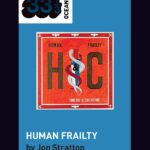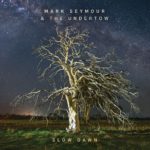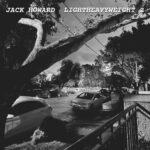Santa, Snakes and Singing in the Outback
An article about Mark Seymour and James Reyne’s Indian Pacific cross country gig.
Author: Michael Kerr, The Telegraph UK.
Date: 10 December 2010.
Original URL: http://www.telegraph.co.uk/travel/destinations/australiaandpacific/australia/8193604/Australias-Indian-Pacific-train-Santa-snakes-and-singing-in-the-Outback.html
Australia’s Indian Pacific train: Santa, snakes and singing in the Outback
On a special Christmas train trip through the Australian desert, Michael Kerr finds country towns that are full of life, colourful characters and plenty of festive cheer.
The snake, finger-thin and yellow-brown, slithered under Father Christmas’s battered old armchair. He bent as if to touch it, and for a moment it looked as if he too might get bitten. It disappeared. Where had it gone? This being outback Australia, there was a Snake Dundee at hand who had a pretty good idea. He reached down, grabbed the snake behind the head and turned what had been a pandemonium-producing reptile into the subject for a photo opportunity.
Meanwhile, Lauren, a teacher in her twenties who had travelled three hours through the bush to a railway siding with her Aboriginal pupils just so they could meet Father Christmas, was sitting on the earth, her left leg bandaged from ankle to knee. “Aow! It’s really stinging,” she said.
“She’s lucky,” another macho type chipped in. “If the snake bit her, she’s a special girl. The snake was attracted to her. It didn’t bite you [this to a woman who was not quite as slim as Lauren] because if it had, the snake would have died.”
A nurse who had arrived with the children and a doctor who happened to be on the train were less convinced about Lauren’s good luck. She was stretchered into an ambulance that had been waiting as a precautionary measure – the only one within a radius of 190 miles – to be driven to Maralinga, some three hours away, and was flown from there to hospital in Port Augusta, north-west of Adelaide.
We had arrived about an hour earlier, intent on bringing festive cheer. For 40 years the Indian Pacific has been crossing Australia and for the past 10 its operating company, Great Southern Rail, has run a Christmas special as a thank you to the communities that support the train throughout the year.
As well as Father Christmas to dole out goodies, the company books a nationally known musician. This year, there were two, the veteran Aussie rockers Mark Seymour and James Reyne, supported (“to provide a bit of additional firepower”, as he put it) by Cameron McKenzie, who has played with acts from Aerosmith to Johnny Cash.
So far, troubadours and Father Christmas had raised the roof at stations in Sydney, Broken Hill and Adelaide. First, the local schoolchildren would take to the stage with Aussie-flavoured carols (“Oh, what fun it is to ride in a rusty Holden Ute”), then Seymour and Reyne would play a few of their hits, then stars and a school choir would combine in Rockin’ Around the Christmas Tree. After that, it was time for the man in the white beard.
Father Christmas is a figure unknown in Aboriginal culture, but in the 11 years that Bruce Dent, a retired bank manager, has been playing him, he has become a familiar and eagerly awaited one in this part of the country.
The night before we arrived at the railway siding of Watson, Bruce’s wife, Colleen, told me: “At the start the kids were very tentative, but over the years they have got more confident. These days, they’re in there like Flynn [Aussie slang meaning to be in there quickly, like Errol Flynn was with the ladies].”
And so it proved. Watson doesn’t even appear on Great Southern Rail’s map of the train’s route; it’s mentioned, if at all, for its proximity to the former nuclear testing site of Maralinga. When we arrived, though, it had become a semicircular Aboriginal encampment of minibuses and 4x4s. Teenagers waited close to the track and younger children hung back with mothers or fathers, who leant against pickups or sat in the dust with their dogs.
There was no carol singing here. Indeed, when the rockers kicked off, they were met with giggling. However, when Father Christmas stepped off the train to sit down with his sack beneath a tinsel-hung bush, he was mobbed. For a moment, his red tunic was lost in the scrum.
It was shortly afterwards that the snake made its appearance, leaving the white people in a tizzy and the black people entirely unfazed.
Maybe we had tempted fate. Shortly after we had left Sydney, on the first evening of our three-night trip across the continent, I came back to my compartment to catch this snatch of commentary over the train’s PA system: “It’s very easy to provide statistics that make Australia sound like a dangerous place in relation to snakes … ”
Easy, too, to get the wrong idea of the sort of landscape you are going to be seeing. Through the window of my compartment – a space with not only a fold-down bed, but a fold-down loo and fold-down sink – it looked much greener than I had expected. Thanks to unseasonal rain in the east, Sydney was having its wettest spring for six years and its coolest for 11. We had to bypass our first scheduled stop, Bathurst, and its waiting carollers, because the track was submerged.
When the River Runs Dry is one of the songs Mark Seymour delivered at stops along the way. No danger of that at present in the east. Menindee Lakes, on the approach to the silver-mining town of Broken Hill, had the air of an inland sea, a spooky one with drowned tree stumps. It was near there that I saw my only kangaroos of the trip: six of them on a roof, cutouts in wood hauling Father Christmas’s sleigh to the Pole.
Our own Father Christmas, Bruce, 6ft 3in with silver hair and moustache, wasn’t interested in going that far afield. “I’ve been to the furthest points north, south, east and west in Australia,” he told me. “I’m not that bothered about going abroad. I like to see my own country.”
Most of the passengers on our 22-carriage train had boarded with similar intent, many of them pensioners taking a trip they had promised themselves for years; a chance to see “the wide brown land” celebrated in Dorothea Mackellar’s poem “My Country”.
Dr Andy Killcross, 37, a GP from Manchester now married to an Australian, was enjoying the ride, too. But he was there to explain and promote the work of one of the few institutions of which no Australian has a bad word to say: the Royal Flying Doctor Service.
The service, he was keen to stress, is not just for aeromedical evacuations. Preventive medicine, from immunisation to a mental health project for teenagers, is a large part of its unsung work. It’s the emergencies, though, about which people most want to hear.
He talked of a flight to an injured miner in the desert in South Australia, and a landing in the dark on an airstrip lit by flares of burning kerosene. “Not the kind of thing I’d be doing if I’d carried on as a GP in Manchester.”
He had been called out, too, when a passenger had a stroke on the Indian Pacific near Cook, a place that’s normally home to only four people who maintain a boarding house for long-distance train drivers: “Suddenly the train arrived with all these passengers. And then we came taxiing down the main street in our plane …”
On the ground, he was told that a second woman was ill; it turned out that she had a potentially fatal heart condition.
Given the narrowness of the train, it was impossible to get a stretcher in to the stroke victim. One of the staff went in on hands and knees, she was put on his back, and then he carried her to the train door. Both patients made it to hospital.
Cook is on a 300-mile stretch of track that doesn’t have a kink, let alone a curve: it’s the longest straight in the railway world.
It runs through the Nullarbor (“treeless”) Plain, where, for mile after mile, the only vegetation is bluebush and saltbush. Here, a bird on a wire was the cause of great excitement at the windows of the Queen Adelaide restaurant car.
We were safe, too, from the trill of the mobile. On the Nullarbor, even the smartest of smart phones had to admit that it had “No Signal”.
Our arrival at Cook was a little more routine than Andy’s, but there were enough of us to keep half the population – one man and one woman e_SEnD behind the counter in the souvenir shop for all of 20 minutes.
Father Christmas, in full gear, was dragged into several groups for a photo. Tourist dollars were taken for “stubbie holders”, teaspoons, cuddly koalas and laminated pieces of A4 paper testifying that the holder had crossed the longest stretch of straight railway in the world.
An ancient-looking notice on a blocked-off door reads: “Any
a—hole that steals from this camp will be gut shot and left for the eagles to feed on.”
That’s the kind of promise I can imagine being made by one of the tough-looking men who brought their families out to greet our Christmas caravanserai at Rawlinna.
This sheep station has 70,000 sheep, but as they are spread over 2.5 million acres, finding them at shearing time requires an aircraft. Mustering one paddock with the aid of motorbikes can take eight hours – and that’s assuming that they are all “in the right place”. The station hands, leaning against their 4x4s and knocking back the stubbies, looked like an audience that might be hard to please.
Urging them to come closer, Mark Seymour said: “We didn’t bring a PA; just guitars, so it’s not so loud.”
One of the hands joked: “You did bring a train, though.”
There were no carols here – not enough children for a choir – and maybe a bit less singing along, but there was as much toe-tapping recognition of the Seymour-Reyne repertoire as there had been everywhere else.
Last time he had played places this remote, Reyne had said earlier, he had been younger and thirstier. He and his band had been warned by local police not to overdo the drinking. “This time,” he joked, “I’ve eaten my way across. They do feed you well.”
They did. Dinner menus ran to four choices of main course and two of dessert – which on the last night, of course, included plum pudding.
After Rawlinna, Seymour, Reyne and McKenzie sang for the penultimate time in the car park behind Kalgoorlie station, while the wind whipped at the pom-poms of the primary school choir’s hats.
After a last “Great Australian Breakfast”, we entered the outskirts of Perth, and the last stretch of a journey of 2,704 miles, from the Pacific Ocean to the edge of the Indian.
Trackside maintenance work brought us to a halt on an incline. On the other side of the window were gardens mulched with bark chippings, over-tidied trees and a pre-office jogger glancing at her watch. Suburbia was swallowing a train that had crossed a continent.
Indian Pacific basics
From where to where?
Coast to coast across Australia from Sydney to Perth or vice versa.
How far?
2,704 miles.
How long?
Three nights.
How much?
From A$2,008 for “Gold Service” (see below). For details see www.gsr.com.au.
Buffet or banquet?
In “Red Service”, with reclining chair rather than sleeper, light meals, snacks and drinks can be bought in a diner. In “Gold Service”, breakfast, lunch and dinner with waitress service are included. Seasonal menus feature dishes such as saltwater barramundi and grilled kangaroo loin.
Sitting comfortably?
Yes, and when the “Gold Service” sleeper seat is down it makes a good bed. But lighting in the shower-cum-lavatory area is too dim.
Time to read
Australia: A Biography of a Nation by Phillip Knightley, a compelling combination of history, memoir and reportage.
Time to listen to
Slim Dusty (1927-2003), Australia’s king of country music, and his hymn to your train, in Indian Pacific: “From the silver of the Broken Hill to old Kalgoorlie gold/She mirrors all the colours of the land so hard and old.” Alternatively, try a recent album by James Reyne (One night in Melbourne) or Mark Seymour (Westgate).
When to go
The train runs all year round, but to see the wild flowers of the outback go between August and October.
Make sure you pack
Sunscreen and a hat for tours of stops along the way.
Australia essentials
Michael Kerr flew with Qantas (www.qantas.com): London to Sydney inclusive return fares in economy from £842; business, £3,932. (Check website for travel periods). He stayed at the Medina Grand Harbourside in Sydney (0061 2 9249 7000; www.medina.com.au; from A$450/£280 a night) and the Richardson Hotel & Spa in Perth (8 9217 8888; www.therichardson.com.au; from A$450 a night/£280 including taxes).
For further information on the Indian Pacific, visit www.gsr.com.au. For more information on Australia contact Tourism Australia (www.australia.com).
N/A.





